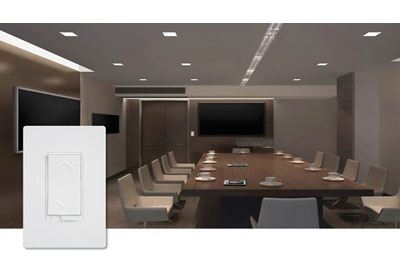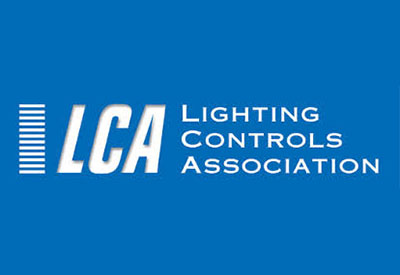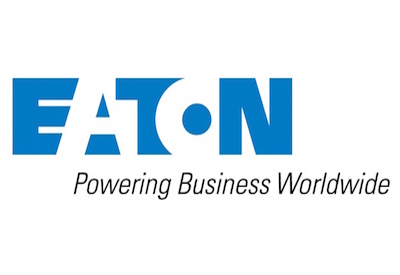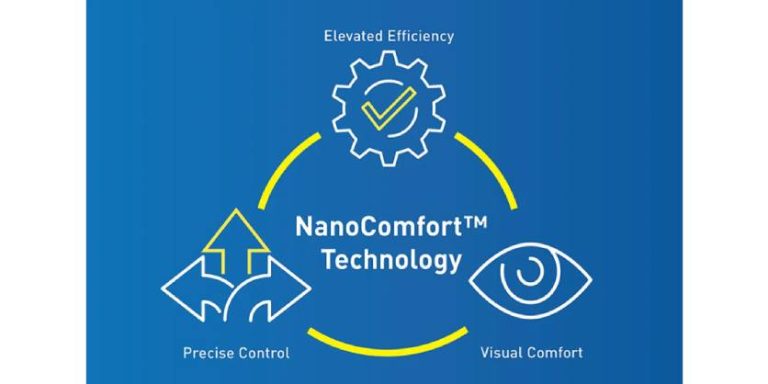The Lighting Sales Question – “Are You My Customer?”

June 9, 2020
Lighting is an important product category for most electrical distributors. Depending upon the distributor’s focus, it can be 25-30%, or higher, of sales! Most distributor’s view the lighting “customer” as “the contractor” (installer). Some consider it the end-user and sell to them. As lighting “products” change, as “solutions” are sold and the competitive environment evolves, more frequently, the question becomes “are you my customer” and channel conflict – involving manufacturers, lighting agents, manufacturer reps, distributors, ESCOs and others – occurs.
Rick Schuett, a lighting and lighting controls manufacturer veteran and now a consultant, recently wrote about the continued evolution in the lighting space for LD&A. He wrote:
It’s the fall of 2019, and the lighting industry keeps changing. Fixtures keep getting smaller, more efficient, more flexible, easier to control, less expensive and a bit more confusing over time. Is a cobblestone paver with integrated LEDs powered by a two-wire, low-voltage cable or solar cells a paver, a fixture, both or neither? Controls have migrated from being an expensive afterthought to a requirement in many localities to meet energy codes and gain the greatest rebate dollars on retrofit projects. Smaller. More efficient. More flexible. Less expensive. Wash, rinse and repeat, over and over.
Meanwhile, architects, electrical engineers and lighting designers continue to market their services much as they have over the years, although in a more competitive world. Electrical contractors still provide bids to GCs and buy from electrical distributors, ESCOs pursue existing building retrofits and use rebates to drive down paybacks to very small numbers, and manufacturers keep trying to grow their business. While the tools that each of these professions has to work with—namely fixtures, controls and software—has changed significantly, their customers really haven’t changed that much.
But changes beyond the boundaries of product development and innovation are “a coming,” and this includes at the customer level: who they are, why they make buying or specification decisions, what they expect, who influences their decisions and who really has “the power.” Most folks involved in the lighting industry can sense it, even if they don’t exactly know or understand the “what” and “when” and, most importantly, “how” it will affect them personally. Just like none of us can predict when the next recession will start, how severe it will be or how long it will last, we also can’t predict with any accuracy which changes affecting the lighting industry will be most profound.
As I mentioned in my June Q+A with LD+A, IoT is currently the “biggest market that isn’t.” However, the same was said about LED lighting back in the day. I once even had someone prove to me mathematically that LED lighting would never be a general light source, and he was correct for several years, until he wasn’t. Those that can see change coming, but choose to believe it’s so far off that it doesn’t matter or that it simply won’t affect them face what industry sage Chris Brown calls “Illumigeddon,” or the end of the lighting business as we (they) know it.
On the other side of the table sit those that look at these changes as disguised opportunities (Illumitunity in the Brown dictionary) and are prepared to identify the future wants and needs of their customers, and start to migrate their business (be it as a specifier, distributor, contractor, ESCO, manufacturer, online store, etc.) to take advantage of these future desires. If you believe that chaos creates opportunities and order creates profits, then this may be the absolutely best time to be involved in the lighting industry.
Let’s say you are one of those sitting on the “new opportunity” side of the table, or at the very least you have one eye on an empty chair that you plan to grab if/when the music stops. The first step in trying to understand the future needs and wants of your customers is to figure out what business you plan to be in and who your customers will be, which sounds a bit daunting because it’s difficult to predict which technologies and business models will gain the most traction.
But even if you are clever enough to identify an up-and-coming business model or technological trend, you still have to identify what you want to do/can do and who your customers of the future might be. With that in mind, let’s discuss four trends which have some reasonable chance of success in the coming years, and how they might change who your customers might be.
1. Controls
Presently we have luminaires and lamps as light sources, and a separate category for “controls” which for the most part connect to lamps or luminaires in some hardwired or wireless manner. Controls were the big “buzz” at this past LIGHTFAIR, and at some future point the market will tip to where there are more “controllable luminaires” and “controllable lamps” with controllability built in than there are lighting products where the control is still an afterthought. The primary differentiator will be the software UI/UX and how interoperable products are with each other, sensors, other systems such as building automation and emergency/first responders, etc.
So, what will change over time? For starters, controls are a solution sale, not a SKU sale. End-user customers want to know what the end result will be, not what the parts and pieces consist of. Being able to present and understand software and particular user interfaces will become more important. Controls provide an opportunity to get into the recurring revenue business, or to sell “as-a-service” offerings. Since most control systems are proprietary, there are few apples-to-apples comparisons available, so participants in the value stream often like to bundle controls with fixtures to create their own “mini-package,” thus offsetting the impact of fixture commoditization.
Most of the actual players involved in lighting won’t change as controls become ubiquitous with lighting, but each player will need to change themselves a bit and learn how to design, specify, purchase, install or commission a solution sale. If you are a lighting manufacturer, all of your customers will expect you to offer some sort of controls solution–either your own, and/ or an offering by an independent entity. If you are a distributor, your customers won’t change, but they will come to expect you to be able to provide a controls package/solution and you better make sure you have personnel available to handle these requests. Contractors and ESCOs will need controls to meet code and rebate criteria, but may also start to use the monitoring aspect of controls to help them provide “Lighting as a Service” to their savvy end-user customers.
2. Outdoor and Indoor Data
One aspect of adding controls to projects is that the information that the control systems can gather may be far more valuable that what the controls were initially intended for. Outdoor lighting controls installed to reduce operational lighting costs in Syracuse now can also power Wi-Fi access points provided by Cisco, relay temperature data from battery-powered sensors installed in road surfaces to accurately predict when roads need to be salted, and provide a wireless backbone to indicate when vacant buildings are occupied when they shouldn’t be and/or when a fire starts using battery-powered sensors. If you are a specifier, or distributor, or contractor, how will you profit from lighting being much more than lighting? Do you even know who your local Cisco systems integrator is? Have you ever called on a city manager, or the director of economic development, or the chief of police, or the head of public works?
Moving inside to a hospital—where the lighting can be used to keep track of where important assets like wheelchairs or equipment that must be recertified every six months is located, or where the temperature of every unit with refrigeration needs to be checked and temperatures logged three or four times a day, or where wayfinding apps can help a hospital achieve higher patient care satisfaction grades—do you know who to call on? The director of compliance, the VP of patient care and customer satisfaction, the CEO? Do you know how to find them, make an appointment and talk to them? Do you understand that they may not want to work together since money comes from different budgets, and that the director of facilities may not want you even talking to anyone else if lighting is involved because she sees their involvement as an intrusion into her turf? How do you work through all of these new “opportunities?”
At one point in my career, when my company was trying to understand the K-12 marketplace, we hired several retired school principals and administrators to help us determine the wants/needs of our K-12 customers, and had them participate in the early sales presentations. If you want to pursue municipalities, universities, hospitals, airports or other verticals where “data” and notification alerts may be important, consider using a free service such as SCORE www.score.org to find local retired executives to help you craft a new message and value proposition for your company.
3. Low-Voltage/PoE Lighting
This is yet another big market that isn’t—at least not yet—partially because the benefits are not related directly to operational costs and much of the lighting industry revolves around reducing operation costs. If an electrical contractor is wiring a hospital and there are huge bonuses available to the GC should it beat the scheduled opening date, and low voltage lighting can reduce the time to wire all of the fixtures and controls in a typical patient care room by 85% as one electrical contractor discovered, then the presentation moves from a “lowest capital cost” to “lowest total net cost.” As a manufacturer or distributor, do you have salespeople that know how to make that presentation? Have they been given the proper tools to show the new economics? What about if you are selling to a commercial property management company that is responsible for tenant finish work? Are you prepared to show that the additional initial costs for low-voltage lighting are offset by the reduced reconfigure time combined with the labor and material costs saved when spaces need to be reconfigured for new tenants? What if you have as a major account a large retailer that is contemplating using low-voltage lighting integrated into their store fixtures (shelving units). Is your customer still the VP facilities and VP store construction, or does the director of merchandising play a role? What about the manufacturer of the store fixtures/shelving units? Are they a potential ally, a neutral third party or potentially a new competitor to your existing business?
4. Lighting as a Service (LaaS)
LaaS is projected to be as much as a billion-dollar business for the U.S. in the coming years, yet most players in the lighting industry haven’t given it much thought. Customers will move away from buying things that generate light to buying the light, itself, over a defined period of time, currently being offered from a five to 10-year time frame. Contractors, ESCOs and distributors will need to seek out those manufacturers or other partners that offer quality goods with warranties that guarantee replacement of defective products over an extended time period, but also de-risk the replacement labor costs. The sales presentation thus moves from a “lowest capital cost” emphasis to a “lowest life-cycle cost” combined with the lowest risk of non-performance to all parties—end users, ESCOs/contractors and even distributors.
Another aspect to consider is how customers expect to be billed for LaaS. Often it is a monthly payment stream which most distributors and contractors (and manufacturers) want converted to an up-front, one-time transaction, because that is what they know and understand. Are your sales personnel able to present a solution sale that spreads payments out over time, even if the risk is ultimately being offloaded to a finance company? How will you make it easier for your current customers to select your firm when the end product just becomes the ultimate commodity—“ light” over an extended period of time?
In closing, we all have watched how the transition to solid-state lighting has rocked the lighting industry, and the expectation is that the lighting world will continue to evolve. That, in turn, can create new opportunities to grow your business, regardless of where you sit in the lighting food chain. Customers are the lifeblood of any business; without them, your company will cease to exist. Who they are, what they want and expect from you, what tools and service offerings you need to have available, the experience and caliber of salespeople needed to call on these customers— much of this will also change. Chaos creates opportunities, order creates profits. Will you be ready to harvest those future profits?
Kevin Grayson, Channel Marketing Group’s resident lighting expert, who joined CMG in November, has over 30 years experience working with lighting manufacturers and their sales organizations. His observation:
What a great discussion of the future of customer decisions, especially given the dynamic evolution of products into services. Our industry is no longer solely “bending tin.” This is a must read for distributors, lighting reps and manufacturer reps!
At the end of the day, the “customer” is the end user. The product innovation cycle has some standardization on LED technology as an illumination source, however, the form factor of the luminaire, the color of light, the intensity, the adjustability, AND the control options are moving ahead at a pace that makes the customer decision very challenging. As technology expands, the ability to educate and specify multiple lighting brands and control systems puts stress on the traditional lighting sales channel. Who is best positioned to work a complicated project from cradle to grave? Who will have the best answer may win. Education and communication are key. It will require focused resources.
As we see the traditional lighting rep specification process continue, the knowledge gap is widening. Many manufacturers have come to realize, by intent, or self-defense, they must step in to fill that gap and make sure the end user has a lighting system that operates in the manner intended, and the benefits of the system are being realized. Covid-19 only makes this harder. Only the bigger players, that have in-house lighting controls are in that position. Or distributors with dedicated, or focused, lighting control resources. Other manufacturers that do not have controls options are seeking partnerships with the larger players, or at the very least, offer “compatible” fixtures to those bigger controls systems. The dilemma of open protocol versus closed or proprietary control systems is a discussion for another day… (think Google vs Microsoft or Microsoft vs Apple.)
Many of the big lighting and control manufacturers are figuring out how to monetize the data these systems collect. This requires a long term relationship with the end user. Who owns that relationship? The rep? The distributor? The contractor? The manufacturer? There is no one answer. Let alone how this relationship, or service(s) are monetized (and shared!). Many of the channel players are working toward more services added, not just selling widgets.
The major lighting manufacturers are paying much more attention to the retrofit market. One they traditionally ignored (which is why mid-tier manufacturers have thrived selling “white goods”). Now that this market is larger than new construction, the battle lines will further blur. Lighting as a Service is getting attention as another long term end user generator of revenue. This is the next evolution of our industry. Especially in the areas of selling direct, strategic partnerships, acquisitions, and bankruptcies!
As Rick’s article says in the closing; “Will you be ready to harvest those future profits?”
Where and who will they buy from in the future? Whom within the channel should be investing to develop and capture this business?
David Gordon is President of Channel Marketing Group. Channel Marketing Group develops market share and growth strategies for manufacturers and distributors and develops market research. CMG’s specialty is the electrical and lighting industry. He also authors an industry blog, Electrical Trends. He can be reached at 919-488-8635 or dgordon@channelmkt.com.









